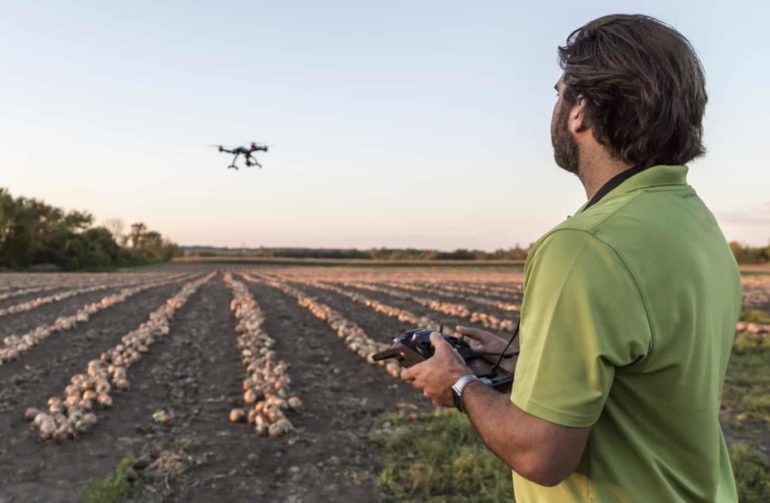The U.N. Food and Agriculture Organization (FAO) and the Philippines have launched a drone initiative to assess where agricultural land is most at risk from natural disasters—and how to rapidly evaluate damages after they occur. The recently initiated project will explore how drones—unmanned aerial vehicles that can be controlled remotely—can assist governments in planning future agricultural interventions to strengthen the farming sector and improve disaster preparedness efforts.
Twenty-five FAO and government technical experts will be deployed across the Philippines to support drone missions in the country, which is one of the most at-risk countries in the world for tropical storms and disasters. Earthquakes, typhoons, and floods have claimed thousands of lives and impacted farms and food systems across the archipelago, leaving people without food after disaster strikes, damaging agricultural land, and costing millions of dollars in crop losses.
The government of the Philippines and the FAO will use the drone technology for disaster risk reduction in the agriculture sector. Drones can cover up to 600 hectares per day, speeding up the risk analysis process. Drones are equipped with navigation and a camera that takes detailed aerial photos from various angles, which allow the team to generate data-rich maps and images. In addition to crop assessments, the data from drone flights can also assist the government in deciding where to build infrastructure projects that can benefit local farmers, like irrigation or storage facilities.
By providing a birds-eye aerial view of farmland, drones allow researchers and farmers to assess the full scope of the situation on the ground. According to the Philippines FAO representative José Luis Fernández, “The adoption of modern technologies in agriculture, such as the use of drones or unmanned aerial vehicles, can significantly enhance risk and damage assessments and revolutionize the way we prepare for and respond to disasters that affect the livelihoods of vulnerable farmers and fishers and the country’s food security.” The FAO is exploring other uses for drone technology in other regions for a variety of monitoring and advising purposes, including controlling pests in crop fields.
However, there are a number of challenges associated with drone technology, including cost and who will analyze the data once it is collected. Questions about where the data will go and who will be able to look at the data to interpret it and make a management decision still need to be determined.















